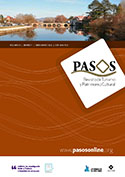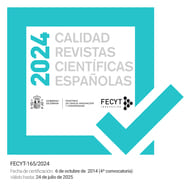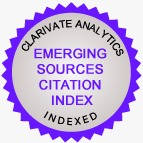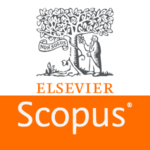The structuring of Aztec dance for tourism consumption among its original group in the Historical Centre of Mexico City
DOI:
https://doi.org/10.25145/j.pasos.2022.20.014Keywords:
Structuration, Tourism , Aztec, Dance, Alienation, Resistance, SpecctacularizationAbstract
This paper analyses how traditional Aztec dance has been structured as a result of tourism in Mexico City's Historical Centre, based on the Theory of Structuration, as conceptualized formally by Bonfil Batalla. The categories of analysis were local and foreign cultural elements, resistance, alienation and innovation. The qualitative research was based on sociological ethnography. The results showed that tourism has caused structuring of traditional Aztec dance, transforming its cultural elements and dividing the dancers into two strands: the chimaleros (who commercialize and dramatize the dance for tourist consumption) and the traditional cultural groups (who resist the effects of tourism). Among other aspects, it is concluded that, regardless of their position, both have undergone adaptive innovation to remain inserted in tourism. It is reflected that trans-structuring is a natural process in society, but that tourism may generate a number of transformations in social practices.
Downloads
Publication Facts
Reviewer profiles N/A
Author statements
- Academic society
- PASOS. Revista de Turismo y Patrimonio Cultural
- Publisher
- Instituto Universitario de Investigación Social y Turismo. Universidad de La Laguna (España) - Instituto Universitario da Maia ISMAI (Portugal)
References
Bonfil, Guillermo (1991). La Teoría del Control Cultural en el estudio de procesos étnicos. Revista Estudios Sobre las Culturas Contemporáneas, Vol. IV, No. 12, Universidad de Colima, México.
De la Rosa, Beatriz (2003); Nuevos turistas en busca de un nuevo producto: El patrimonio cultural, Revista Pasos, Vol. 1, No. 2, Universidad de la Laguna, España.
De la Torre, Renée (2007); Alcances translocales de cultos ancestrales: El caso de las danzas rituales aztecas, Editorial Escuela Nacional de Antropología e Historia – Centro de Investigaciones y Estudios Superiores en Antropología Social Occidente, México.
Fernández Repetto y Estrada Burgos (2014); Esencialización y espectacularización de lo maya: Turismo voluntario y étnico en una comunidad yucateca, Revista Península Vol. 9, Universidad Autónoma de Yucatán, México.
Flores Mercado G., Nava L. Fernando (2016); Identidades en venta: Músicas tradicionales y turismo en México. Editorial Universidad Nacional Autónoma de México – Instituto de Investigaciones Sociales. México.
Fuller, Norma (2009); Turismo y cultura: Entre el entusiasmo y el recelo. Fondo Editorial de la Pontificia Universidad Católica del Perú, primera edición. Perú.
Giddens, Anthony (1995); La constitución de la sociedad: Bases para la Teoría de la Estructuración. Amorrortu editores, Argentina.
Goetz M. (1988); Etnografía y diseño cualitativo en investigación educativa; disponible en http://etac.clientes.tralcom.com/tc-etac/cursos/Caulitativa_contenido/html/lecturas/28%20DISTINCION%20ENTRE%20LA%20ETNOGRAFIA%20Y%20OTROS%20MODELOS%20DE%20INVESTIGACION.pdf; consultado el 18 de marzo del 2020.
Mignolo, Walter D. (2000); La colonialidad a lo largo y a lo ancho: El hemisferio occidental en el horizonte colonial de la modernidad. Editorial CLACSO, Consejo Latinoamericano de Ciencias Sociales. Buenos Aires, Argentina. Consultado en http://biblioteca.clacso.edu.ar/clacso/sur-sur/20100708044529/5_mignolo.pdf el 10 de diciembre del 2019.
Montes de Oca Barrera, Laura Beatriz. (2015). Entre activistas, funcionarios e industriales: Aplicación de la etnografía -enfocada y política- en escenarios de gobernanza. Nueva antropología, 28(83), 25-46. Consultado en http://www.scielo.org.mx/scielo.php?script=sci_arttext&pid=S0185-06362015000200003&lng=es&tlng=es el 10 de diciembre del 2019.
SECTUR (2018); Información turística por entidad federativa, Ciudad de México, consultado en http://www.datatur.sectur.gob.mx/ITxEF/ITxEF_DF.aspx el 23 de septiembre del 2018.
Thompson, John B. (1988); La teoría de la estructuración; una valorización de las contribuciones de A. Giddens. Revista Sociológica, VOL: AÑO 3, NUMERO 7-8, Universidad Autónoma Metropolitana, México.
Torres Ortiz, Susana (2010); La consigna de Cuauhtémoc en el siglo XXI. En Camarena Ocampo, Mario (coord.); La Construcción de la Memoria Colectiva. Editorial Escuela Nacional de Antropología e Historia – posgrado. ENAH, México.
Downloads
Published
How to Cite
Issue
Section
License
Copyright (c) 2020 José Alejandro López Díaz, Graciela Cruz Jiménez, Omar Ismael Ramírez Hernández, Lilia Zizumbo Villarreal

This work is licensed under a Creative Commons Attribution-NonCommercial-NoDerivatives 4.0 International License.
I confirm that the work is original (of my/our authorship), and that it will not be submitted to other journals or publications until the final resolution of the review process in PASOS, RTPC.
I authorize the publication of my work by PASOS, PSTN of free and open access in any of the formats that I deem appropriate, for an indefinite period of time and as a non-remunerated collaboration.
Likewise, the author(s) understands that the published work may be linked or deposited on any server or included in other publications (republication), provided that the new place and/or new edition references the original publication and acknowledges the authorship and copyright ownership of PASOS RTPC publications.
Authors understand that a plagiarism-self-plagiarism check will be performed, and the article may be removed at any time from the editorial flow.










